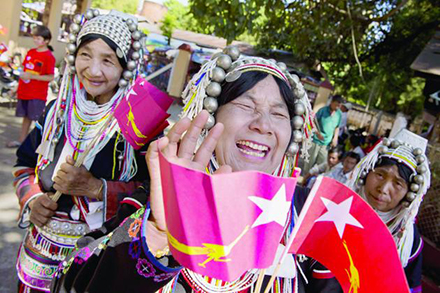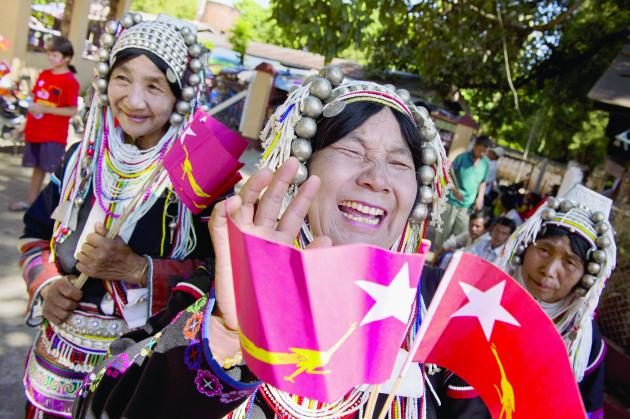
This column was published in The Myanmar Times on Monday, 25 January 2016
Last year I was often asked who would win the 2015 general election. The answer was obvious enough: The National League for Democracy was primed to triumph in any relatively free vote. No prizes for that prediction.
Of course, there was no robust opinion polling on which we could make more precise assessments. The constituency-by-constituency analysis possible in many democratic political systems has yet to arrive on Myanmar shores.
In refining our predictions and making suggestions about the outcomes for other political parties, many analysts, including myself, misjudged the allocation of seats.
I was pretty confident that ethnic parties would poll strongly. My best guess was that they would win around 20 per cent of seats, with robust performances in most ethnic areas. That judgement was wrong.
It turned out that the only places where ethnic parties performed well were Shan and Rakhine states. Even in those areas, their victories were partial, picking up more seats in the state hluttaw (parliament), and surrendering many at the Union level to the NLD landslide.
Elsewhere, ethnic parties generally performed poorly, with previously stout groups obliterated in the Kachin, Chin, Kayin and Mon states. They now join Kayah State as places where national parties hold sway, defined by the preferences of their Bamar leaderships. Already, prominent political leaders from the minority side are voicing their discontent. The NLD naturally insists that its elected members are up to the task of representing ethnic interests.
Before the vote, the people I found were most confident about a bumper NLD win were from the NLD itself. I once listened intently to an NLD strategist who claimed that their plan was to win every seat, in every part of the country. He explained how that was possible. I countered with the standard impression that ethnic parties were too popular for his numbers to add up.
In hindsight, the NLD could take advantage of some significant trends in its favour. Looking carefully at them requires a reappraisal of Myanmar politics and society.
First, the NLD carries a unique status as the party of resistance to military dictatorship. It has almost universal appeal. Everyone in Myanmar knows Daw Aung San Suu Kyi’s story. Her activist charm even makes sense to many of those who were loyal servants of the old military regime.
Across social classes, in all different ethnic groups, and through the length and breadth of the country, people are still excited by the idea that she can lead a program of change.
Second, many ethnic corners of Myanmar have slowly but surely become more diverse. Internal migration not only means that Bamar live in Mon and Kayin states in large numbers, but that everyone else has also been moving around. For instance, there are lots of ethnic Chin and ethnic Rakhine in Kachin State, to say nothing of the Shan, who seem to be everywhere.
What this internal migration generates is general sympathy for “Union spirit”, even in supposedly rebellious ethnic areas. In November 2015, ethnic parties could not rely on a solid base of local ethnic support. This has profound implications for the plethora of micro-parties that contested the recent vote, with doubts about their claims to narrow solidarity.
Third, affection for ethno-nationalist politics has never been subjected to the people’s quantifiable judgement. While we can surmise the level of support from the number of troops claimed by an armed group, these are only very rough indications of how people feel about them. In 2015, in most cases, political parties closely associated with armed groups didn’t even get close to first-past-the-post.
Instead, they, like the rest of us, are now left to wonder about the future of ethnic politics during years when the NLD will try to set the agenda. Daw Aung San Suu Kyi, like many other Bamar nationalists, has only limited tolerance for demands from ethnic minorities.
In her view, which I find is the common impression among the NLD, ethnic parties need to accept her mandate for unifying the federal union. There will be little room for those who dissent from this perspective. That has real implications for what happens next.
It is clear that instead of casting a vote in Naypyitaw, the ethnic parties may struggle to have their voices heard. Simply, there are too few of them for anybody to pay much attention.
It makes sense that such potential democratic disenfranchisement will need to be handled sensitively by the new government. They require consensus for the peace process to go smoothly, and will also benefit from good relations with ethnic leaders for negotiations about all manner of tricky political and economic issues.
Having misjudged the number of seats that ethnic parties would win in the 2015 election, I will keep my powder dry for now about any bolder predictions.
Nicholas Farrelly is director of the Myanmar Research Centre at the Australian National University and the co-founder of New Mandala.
 Facebook
Facebook  Twitter
Twitter  Soundcloud
Soundcloud  Youtube
Youtube  Rss
Rss 